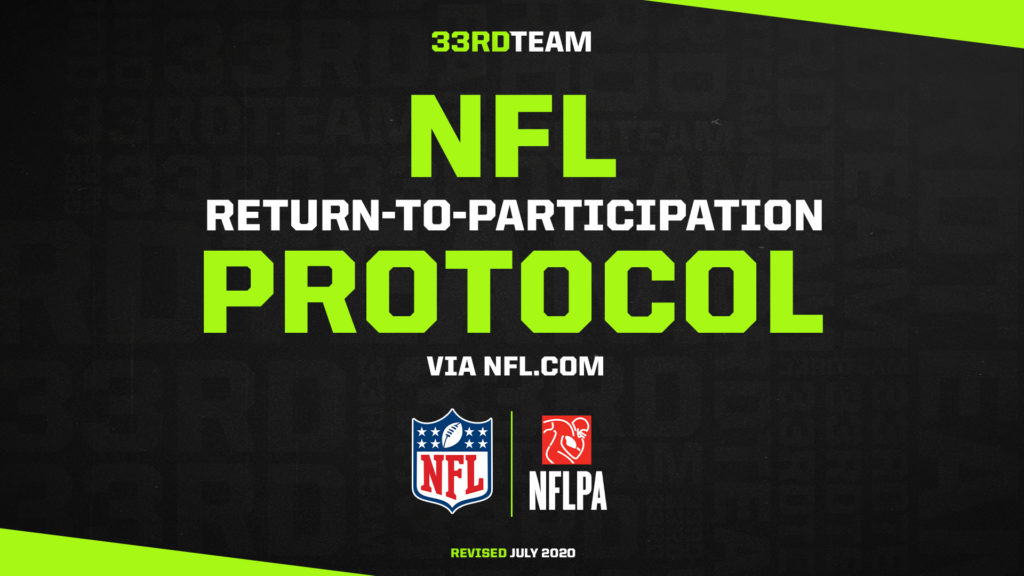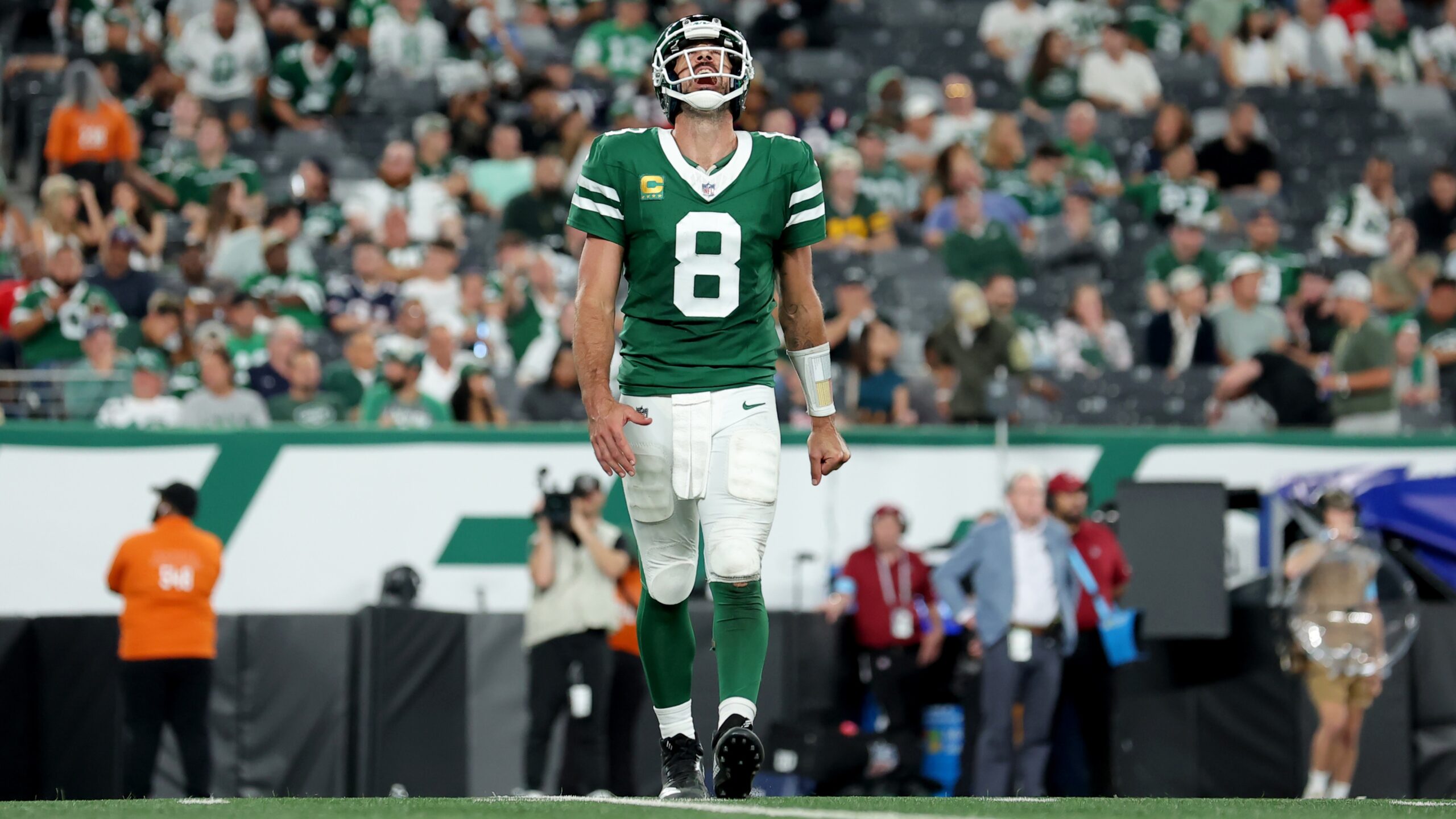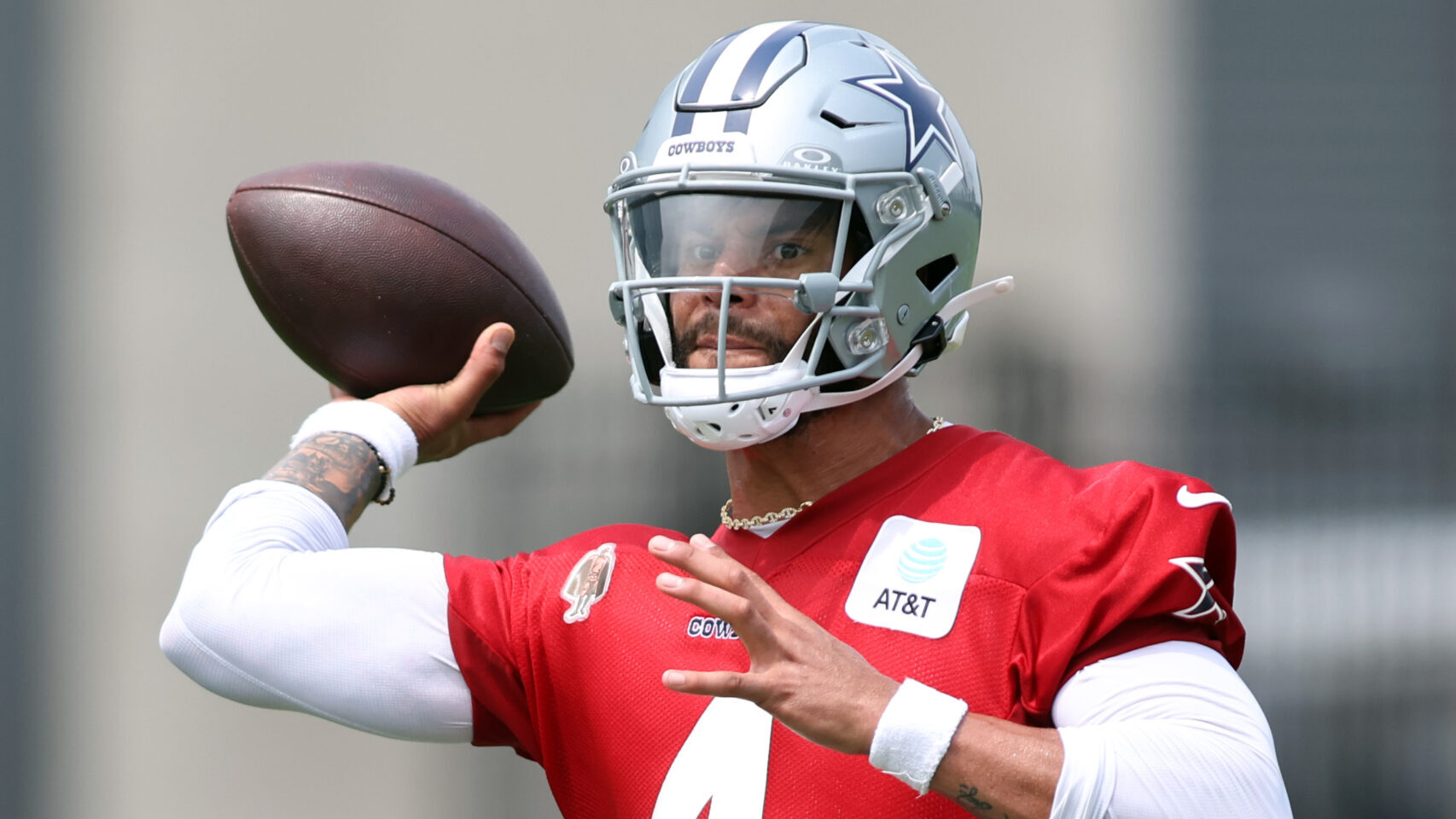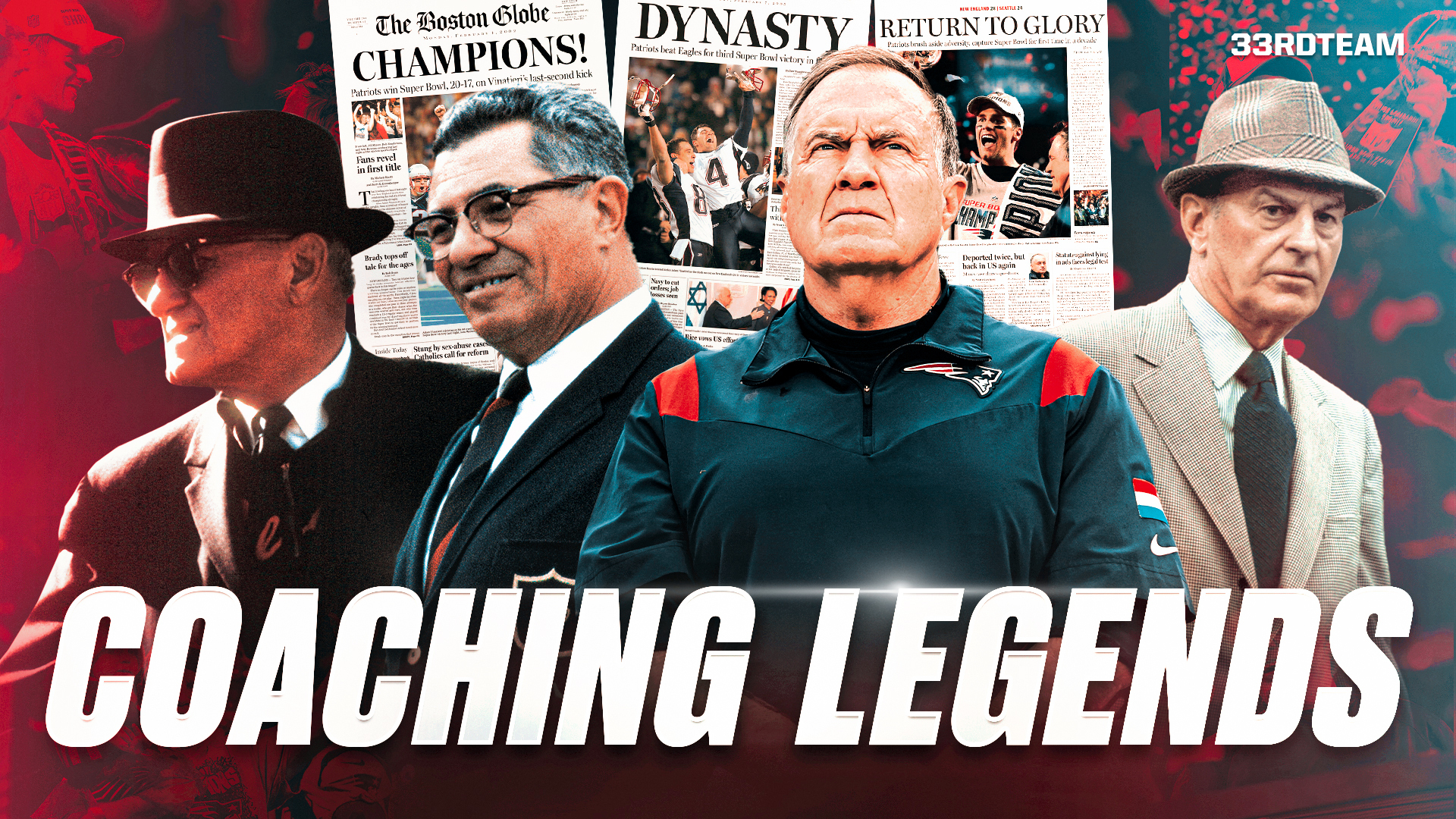Analysis
9/30/22
8 min read
How the NFL's Concussion Protocol Works

Many questions were raised Thursday night after Dolphins quarterback Tua Tagovailoa suffered a concussion in the first half of Miami's loss to Cincinnati.
Much of it was coming from current and former NFL players on social media, asking whether Tagovailoa should have been playing in the game at all considering just four days earlier he had displayed gross-motor instability in a win over the Buffalo Bills, a game in which he returned in the second half and played well, leading Miami to a comeback victory.
"The way the whole process is designed, just from a macro standpoint, is you want to have checks and balances," said Mike Tannenbaum, former general manager of the Dolphins and New York Jets.
And those checks and balances are defined and spelled out in the collective bargaining agreement between the players union and the league.
Here is a synopsis of those protocols, agreed upon by the NFL and the NFLPA, for a head injury that occurs in a game and what needs to happen thereafter for that player to be cleared for return to play (information provided by the NFL).
Game Day Concussion Checklist
When a player suffers trauma to the head, he goes into the concussion protocol if either of the following take place:
- The player exhibits or reports symptoms or signs suggestive of a concussion or stinger (a nerve pinch injury); or,
- The team athletic trainer, booth ATC spotter, team physician, game official, coach, teammate, sideline Unaffiliated Neurotrauma Consultant (UNC) or booth UNC initiates the protocol.
If either of these occur, the player must be immediately removed from the game or stabilized on the field, as needed to undergo the concussion assessment, which includes:
Removal of his helmet, with the team physician and UNC performing a sideline survey that includes:
- A "no-go" assessment (lack of concentration, gross-motor instability, confusion, amnesia)
- History of event
- Concussion signs/symptoms
- Maddocks questions related to player's awareness of his surroundings and what just happened
- Video review of the play where the trauma occurred
- Focused neurological examination (cervical spine exam, including range-of-motion pain; evaluation of speech; observation of gait; and eye movements and pupillary exam)
If any elements are positive, inconclusive or suspicious of concussion, the player is escorted to the locker room, where he is examined by the team physician/UNC, who issues a complete NFL SCAT5 exam and neurological evaluation.
If the results of either the sideline survey or the locker room assessment are deemed normal, the player is allowed to return to the game. If abnormal, the player stays in locker room for a periodic evaluation by the medical team with a follow-up neurological exam.
Return-to-Play Protocol
If the player is diagnosed with a concussion, he must follow a five-phase process before being cleared to return to practice or play in a game:
Phase 1: Symptom Limited Activity
The player is prescribed rest, limiting or, if necessary, avoiding activities (both physical and cognitive) which increase or aggravate symptoms. During this phase, the player may engage in activities of daily living as well as limited stretching and balance activities as tolerated at the discretion of the club medical staff. Phase 1 may include light aerobic activity and, if tolerated, attending team meetings and/or film study. Should additional medical issues present, the club physician should consider external consultation or additional diagnostic examinations. If the player does not experience an increase in his symptoms and does not develop signs of concussion on neurological examination, he may be cleared to proceed to the next phase.
Phase 2: Aerobic Exercise
Phase 2 involves the initiation of a graduated exercise program. Under the direct oversight of the club’s medical staff, the player should begin graduated cardiovascular exercise (e.g., stationary bicycle, treadmill) and may also engage in dynamic stretching and balance training. The duration and intensity of all activity may be gradually increased so long as the player does not increase or aggravate signs or symptoms while performing the activity and for a reasonable period thereafter. If there is an increase or aggravation of signs or symptoms, the activity should be discontinued. He may, however, attend regular team meetings and engage in film study. At Phase 2, the player should be back to his baseline level of symptoms or the team physician reasonably determines that the symptoms are not related to concussion. Once the player has demonstrated his ability to engage in cardiovascular exercise without an increase or aggravation of signs or symptoms, and his symptom burden is at or below his baseline, he may proceed to the next phase.
Phase 3: Football Specific Exercise
The player continues with supervised cardiovascular exercises that are increased and begin to mimic sport specific activities, as well as supervised strength training. The player is allowed to practice with the team in sport specific exercise for 30 minutes or less, with ongoing and careful symptom monitoring by the medical staff. If neurocognitive testing was not administered after Phase 2, it should be administered during Phase 3. If a player’s initial neurocognitive testing is interpreted by the NPC as being indicative of residual cognitive impairment(s) due to the concussion, the tests will be repeated at a time interval agreed upon by the club physician and NPC (typically 48 hours). The player should not proceed to contact activities until their neurocognitive testing is interpreted as back to their baseline level by the NPC or, if a decrement is still present, until the club physician has determined a non-concussion related cause. The determination of when to proceed with contact activities is ultimately made by the club physician. Once the player has demonstrated his ability to engage in cardiovascular exercise and supervised strength training without an increase or aggravation of signs or symptoms, he may proceed to the next phase.
Phase 4: Club-Based Non-Contact Training Drills
The player may continue cardiovascular conditioning, strength and balance training, team-based sport-specific exercise, and participate in non-contact football activities such as throwing, catching, running and other position-specific activities, progressing to participation in non-contact team practice activities. To be clear, all activities at this phase remain non-contact (i.e.., no contact with other players or objects, such as tackling dummies or sleds). If the player is able to tolerate all football specific activity without a recurrence of signs or symptoms of concussion if his neurocognitive testing has returned to baseline, and if his symptom burden remains at or below baseline, he may be moved to the next phase in the sequence. For clarity; all signs, symptoms, and neurological examination (including neurocognitive testing and balance testing) must return to baseline status before returning to full football activity/clearance. Exceptions to the neurocognitive component may be considered by the club physician responsible for the diagnosis and treatment of concussion (in consultation with the NPC) on a case-by-case basis in player with documented ADHD or learning disabilities.
Phase 5: Full Football Activity / Clearance
After the player has established his ability to participate in non-contact football activity including team meetings, conditioning and non-contact practice without recurrence of signs and symptoms and his neurocognitive testing is back to baseline, the club physician may clear him for full football activity involving contact in practice. If the player tolerates full participation practice and contact without signs or symptoms and the club physician concludes that the player’s concussion has resolved, he may clear the player to return to participation. For the avoidance of doubt, if a player cannot participate in practice or full contact with other players due to the time of year and/or rules imposed by the Collective Bargaining Agreement, simulated contact activity will suffice to satisfy this phase. Upon clearance by the club physician, the player must be examined by the INC assigned to his club. The INC must be provided a copy of all relevant reports and tests, including the sideline and booth UNC reports, the Booth ATC Spotter report and team injury reports, and have access to video of the injury, where applicable, and the player’s neurocognitive test results and interpretations. If the INC confirms the club physician’s conclusion that the player’s concussion has resolved, the player is considered cleared and may participate in his club’s next game or practice.
Because concussions and players are all different, there is no established time-frame for return to play. Medical staff from the player's team take into consideration a multitude of things, including the player's history with concussions, his medical history, family history and future risk.
After a player goes through the five steps and is cleared for full participation by the team physician, he then is seen by an Independent Neurological Consultant (INC), who is jointly approved by the NFL and NFLPA and not affiliated with any NFL club. Until the player is cleared by this independent physician, he cannot return to contact practice or play in a game.






